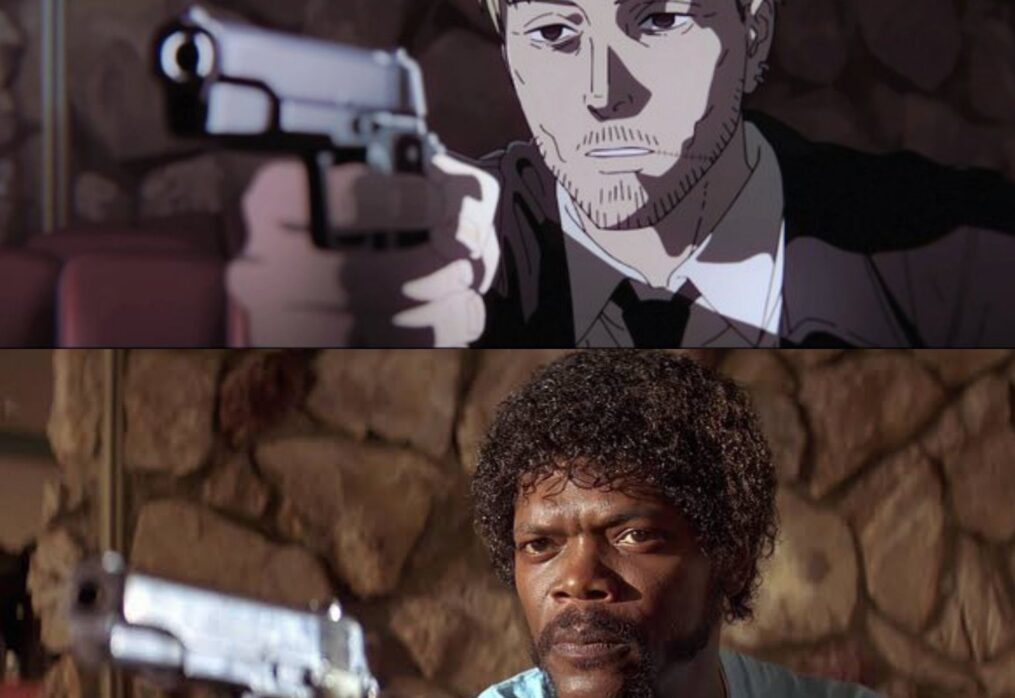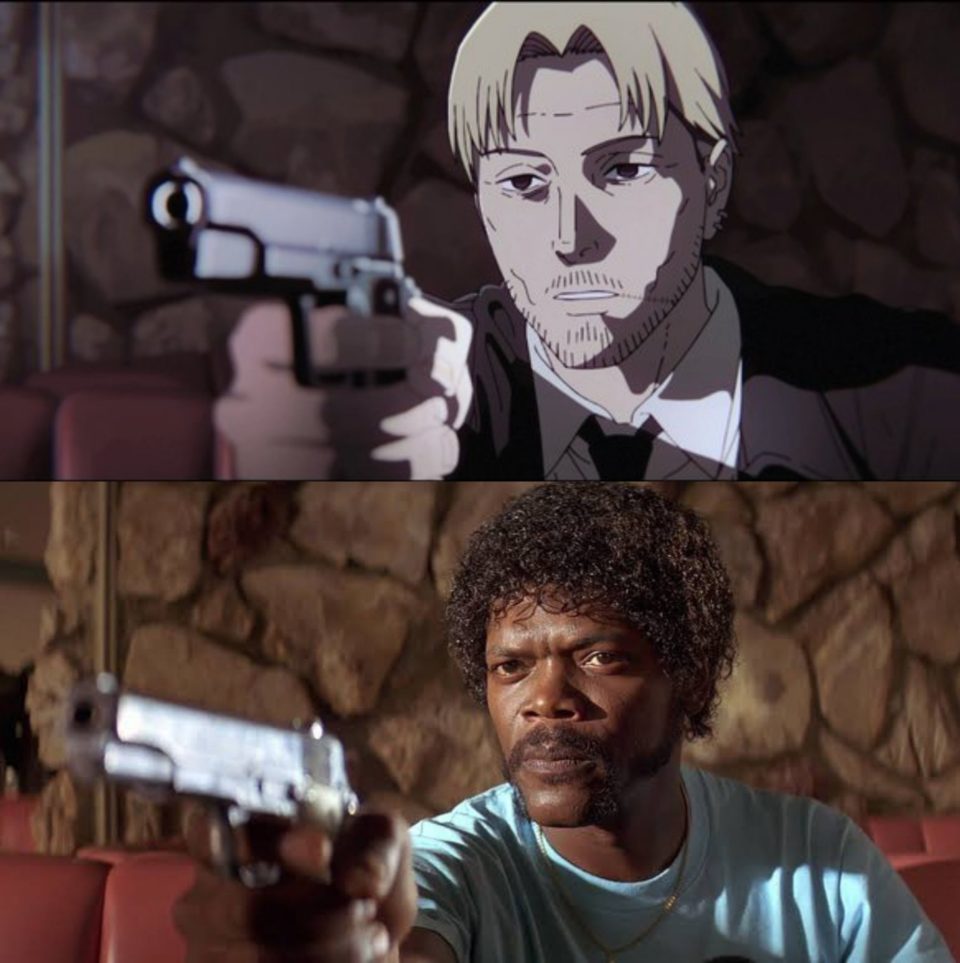Tarantino, Leatherface, Chainsaw: The Much-Awaited Anime Adaptation of ‘Chainsaw Man’ Is Here
Tatsuki Fujimoto’s manga is made for screen by Ryū Nakayama and Makoto Nakazono while Shingo Yamashita, the opening director of ‘Naruto: Shippuden’ and ‘Jujutsu Kaisen’ is the master behind the opening title sequence
An anime opening sets the stage for the show and you get a rough idea of the life you’re about to follow for the next twenty-five minutes. Animated by studio MAPPA, it’s really the opening that stands out the most in Chainsaw Man. Set to Kenshi Yonezu’s opening track, “Kick Back,” it offers a glimpse into Denji’s (the protagonist) story of pure chaos. Gory, violent, heartbreaking with a bizarre comedic element thrown in.
It’s no secret that the author of Chainsaw Man Fujimoto is a cinephile. In his earlier works, Fire Punch and Goodbye, Eri, there are characters who are aspiring film makers. It is therefore unsurprising to see so many cinematic references cleverly packed into the 90-second opening, paying homage to films and more which have no doubt inspired the series. So, let’s break it down.
Quentin Tarantino: It’s no surprise that Quentin Tarantino’s work features big in the opening sequence as his signature violent black comedies finds resonance in Chainsaw Man. You have a shot of the main characters walking down the street mirroring the image of the bad boys of Reservoir Dogs. Drawing parallels from the Reservoir Dogs’ storyline, who could the black sheep be?
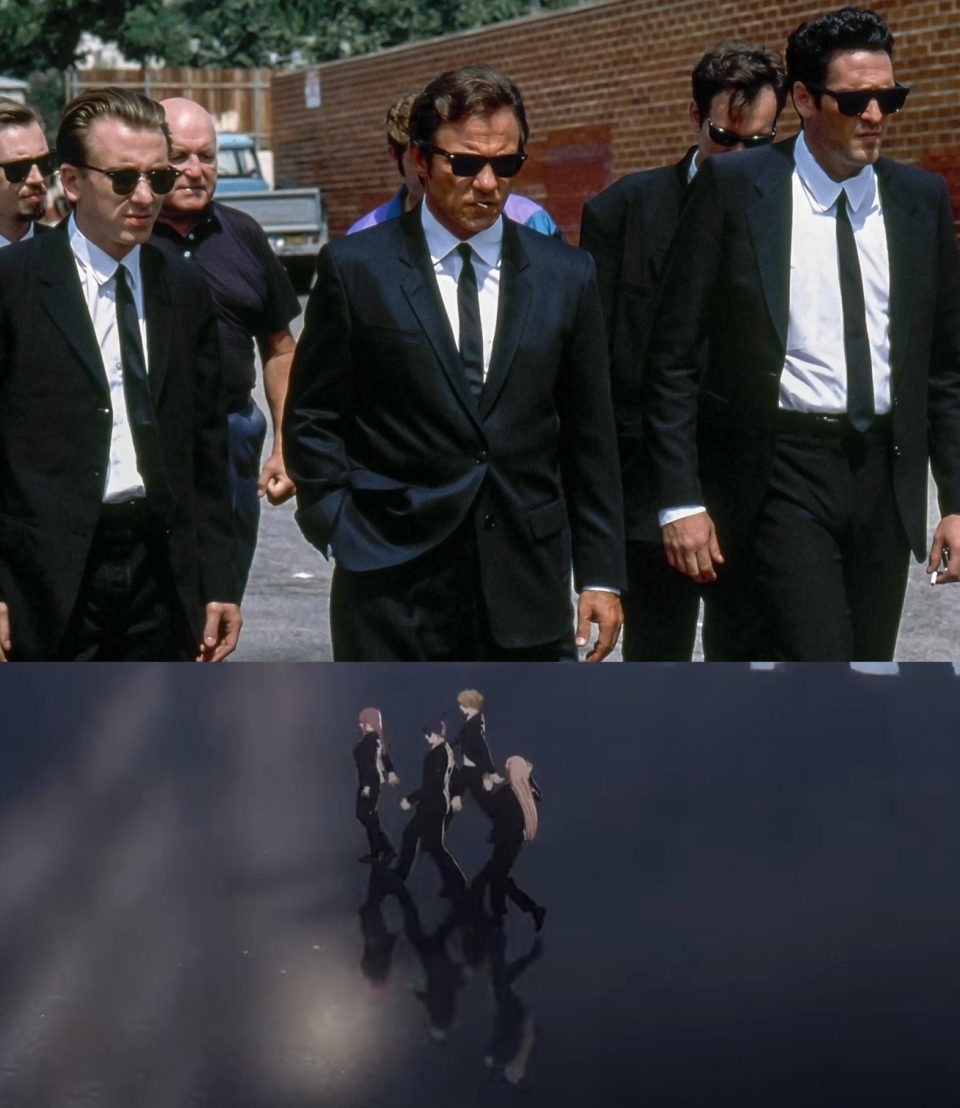
Then we have that memorable Mexican standoff scene in the diner from Pulp Fiction where Jules (Samuel L. Jackson) explains how he’s giving up a life of a gangster while holding Ringo (Tim Roth) at gunpoint. It is recreated, right down to the red couch and stone walls, with Captain Kishibe, a devil hunter. And let’s face it, devil hunters are just hitmen too.
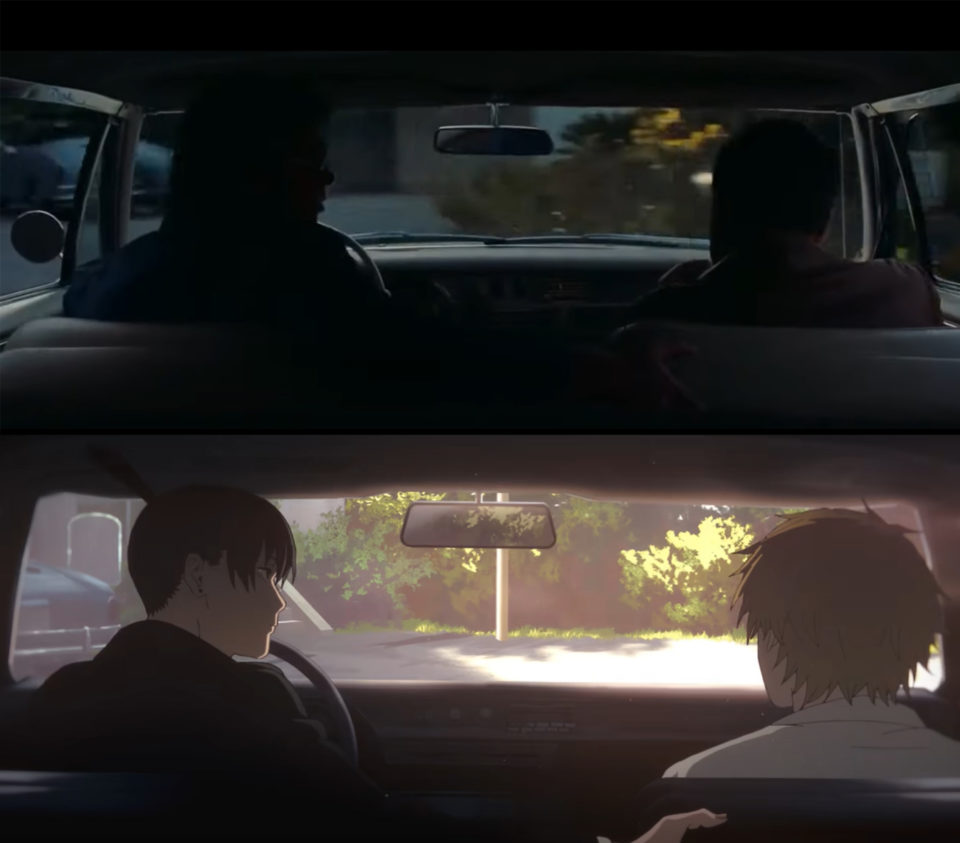
Denji and Aki mimic the scene from Once Upon a Time in Hollywood where Rick Dalton (Leonardo DiCaprio) and his best friend/stuntman Cliff Booth (Brad Pitt) pull out of the driveway. The fact that both these scenes take place in the opening credits and the scenery being the same (with the same blue convertible parked in the driveway) is a fun little easter egg.

Coen Brothers: No Country for Old Men, like CSM, is bloody, violent and gritty. It seems that Galgali, the Violence Fiend and devil hunter has checked into the same room as hitman Anton Chigurh (Javier Bardem) from No Country for Old Men, removing his boots in the same fashion.
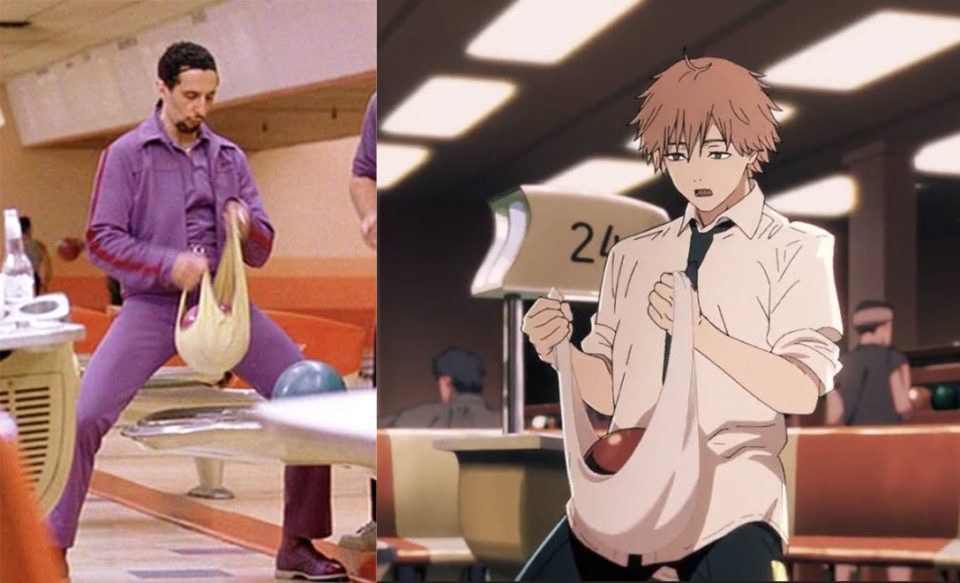
The Big Lebowski already has a reference in CSM. Fujimoto has said that the personality of the character of Power was inspired John Goodman’s character, Walter Sobchak. It’s pretty obvious that Denji has picked up his bowling ball polishing skills from ‘The Jesus’ Quintana (John Turturro).
In David Fincher’s Fight Club, the anti-corporate group, Project Mayhem led by Tyler Durden (Brad Pitt), hatches a scheme to vandalize an art installation, a giant golden ball which proceeds to roll down and crash into a coffee shop. We see CSM’s Power strike a similar golden ball (could be the same one recovered from the coffee shop) with her giant mallet and send it straight to enemy territory.

The horror genre finds representation too. The rooftop scene from Francis Lawrence’s Constantine which had Keanu Reeves playing the exorcist is recreated as well. In the film Constantine (Keanu Reeves) hands over the Holy Spear to Angela (Rachel Weisz) advising her to hide it, we see the characters Aki and Himeno substituted in their place holding a similarly wrapped object, in the same rooftop. Fitting for an anime like Chainsaw Man to slip in a Constantine reference, since Constantine spends majority of his time deporting demons back to hell.
Attack of the Killer Tomatoes (yes, you read that right) is a parody horror film about tomatoes becoming sentient killers. In the film, a team of specialists are tasked by the President of the United States to rid the threat of these malevolent tomatoes and they struggle to fit in the tiny conference room, prompting one of them to climb on the table. This scene is recreated in CSM with the map of United States being replaced by the anatomical illustration of the Tomato Devil. The Tomato Devil appears in the first episode, perhaps it is one of killer tomatoes that got away?
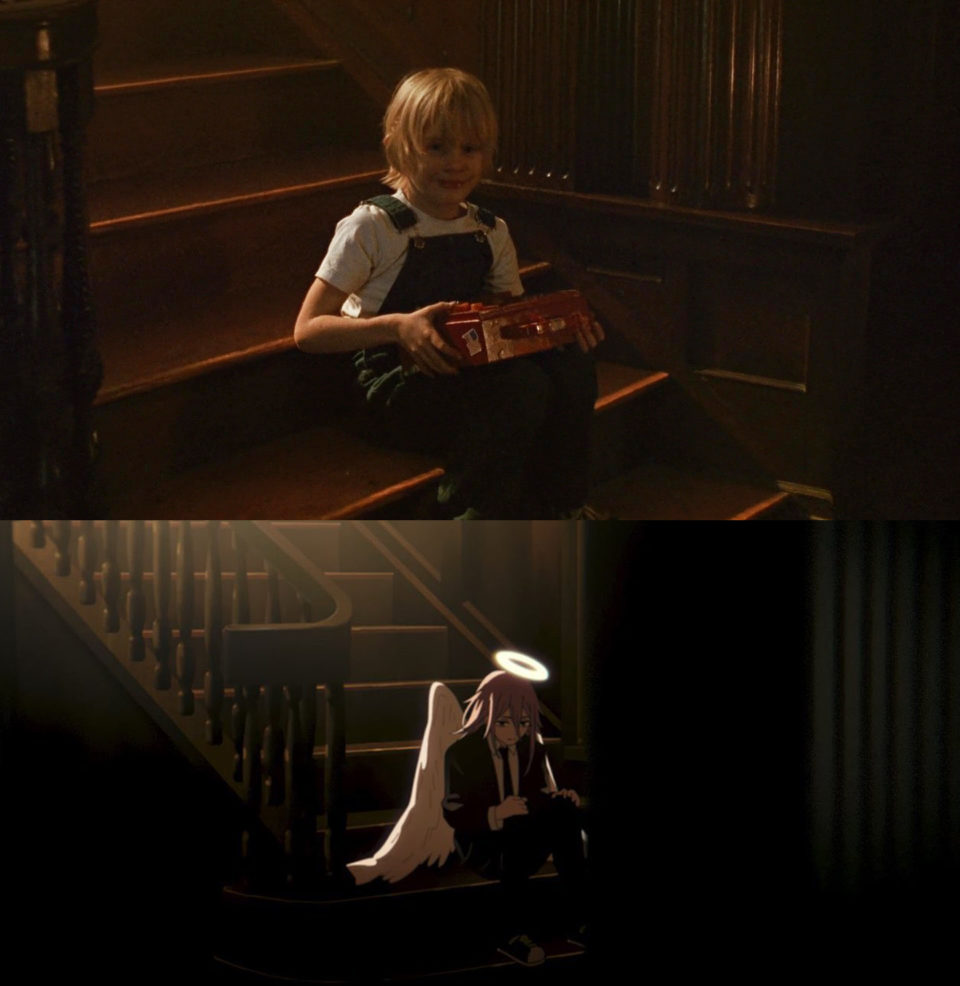
Adrian Lyne’s Jacob’s Ladder is a psychological horror film about Jacob Singer (Tim Robbins), a Vietnam veteran haunted by hallucinations. At the end of the film Jacob returns to his family home where he sees his dead son Gabe (played by a cherubic Macaulay Culkin) sitting at the foot of the stairs waiting for him. Gabe then takes his father’s hand and leads up the stars towards a bright light, a peaceful death. Here we see the Angel Devil patiently waiting at the foot of the same staircase, but whose hand will he take?

The name ‘Chainsaw Man’ certainly conjures up the image of chainsaw wielding cannibal killer Leatherface. Fujimoto revealed that it was indeed Leatherface and his chainsaw (from the 1974 Texas Chainsaw Massacre film) that inspired him to create the character of Denji. While both chainsaw men have stories that have blood, guts, gore, violence (and spoiler alert cannibalism) they’re chalk and cheese when it comes to personalities. The most fitting homage in the opening sequence is the one to Texas Chainsaw Massacre (1974), and it really drives the message home that while Denji is born from the idea of Leatherface, he isn’t like Leatherface at all. We see Denji as a child, cradling Pochita (the chainsaw devil) in his arms sitting serenely in what appears to be a graveyard. The same graveyard where Leatherface has in a grotesque display turned the mangled corpses of two of his victims in what one can only assume is an art exhibit.
In the film Messiah of Evil, a young woman in search for her missing father lands up in a small town overrun by a cult of flesh-eating zombies. In Chainsaw Man we have Denji who ends up fighting man eating devils in order to pay for his dead father’s debt. The scene recreated here is when a character goes to the theatre only to get devoured by a horde of zombies.
Sadako vs. Kayako, one of the most ambitious crossovers in history. Ever wanted to know which cursed spirit would win? The Ring or The Grudge? While not dipping into the details of the story, the characters in the film figure the best way to fight a curse is with another curse . In the Chainsaw Man version, we have the protagonist Denji pitted against the Katana Man (Katana Devil) fighting over the cursed well. For Denji’s sake let’s hope he doesn’t end up falling in because what’s down there is quite possibly more frightening than any devil he’s fought.
While on Japanese horror we have Don’t Look Up (Joyû-rei which translates to Ghost Actress). As the title implies the story is about a ghost of a dead actress driving a film crew insane by haunting them. In the opening we see cowering, frightened Denji while Power screams in the background. Her expression doesn’t seem to be of fear though, one can only assume she’s the cause of Denji’s distress, which you will soon find out in the show, she is (jokes aside she really is a horrible roommate).
MCU fans would have no doubt spotted this reference the second it appeared. The hammer wielding Power’s name appears in the same font and colour scheme as the Mjölnir wielding Norse god Thor, from Thor: Love and Thunder.

We have references from anime and manga as well. The first is from the critically acclaimed Neon Genesis Evangelion, a cerebral psychological thriller that masquerades as a mecha anime. The opening mirrors a scene from an episode Unit-01, a mech piloted by 14-year-old Shinji Ikari tears through the Angel Leliel, with Denji taking Shinji’s place. Both shows feature teenage boys thrust into a situation in which they are way over their heads and have to keep fighting to stay alive.
In Fujimoto’s Goodbye, Eri the protagonist Yuta has a penchant for ending his films in dramatic explosions. Part 2 of the Chainsaw Man manga has a scene referencing this as well, it’s only natural for the opening to give a subtle nod to the mangaka’s other work.
The opening isn’t just restricted to pop culture references, in the first shot of the opening Denji is seen pulling the cord in his chest to turn himself into the Chainsaw Man, behind him is the image of Ciampolo escaping the devils a scene from Dante’s Inferno. The Inferno showcases Dante’s journey through hell and the Chainsaw Devil is known as the ‘Hero of Hell’, erasing devils from hell. Here Ciampolo escapes just in time to avoid Denji slaughtering the devils.
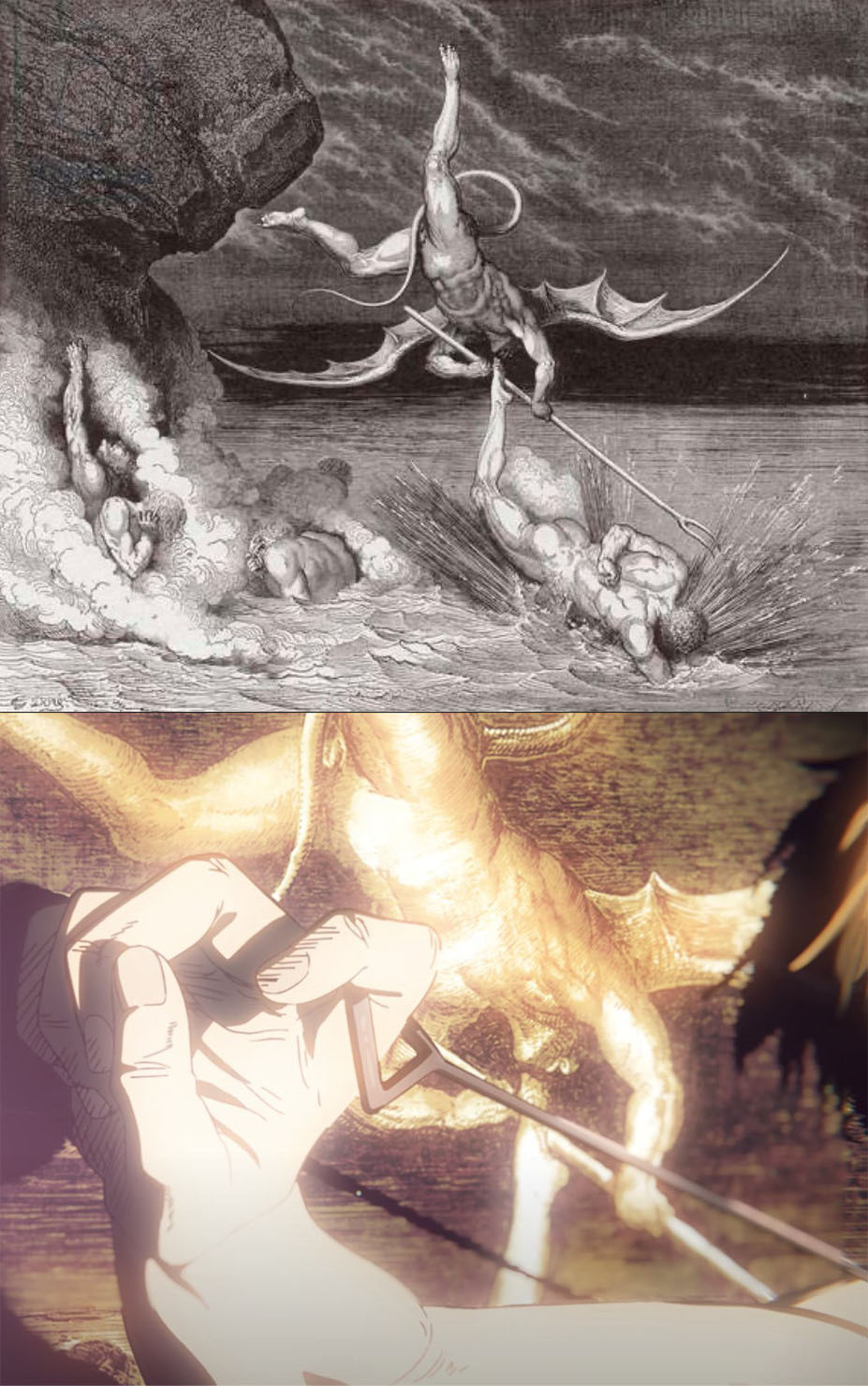
The final easter egg is the craters in the opening when Denji crashes into various walls, which spells out the letters – C S M, that stands for, you guessed it, Chainsaw Man.
SPOILER ALERT: Coming back to the black sheep in Reservoir Dogs. Here’s a hint. In a brief shot, Makima is seen feeding Denji the Leucochloridium paradoxum, a parasite which takes over and controls the bodies of snails through their eye stalks. The devils in Chainsaw Man similarly take over the bodies of humans. Lying down on her lap, he is surrounded by Venus Flytraps. If you thought the Leucochloridium and the Venus Flytrap was bad, the emerald jewel wasp sitting on top of Denji’s head might be worse. The emerald wasp has a venomous sting which it uses to paralyze cockroaches to use them as hosts for its larvae.
If a whopping seventeen pop culture references with hidden messages are packed into a ninety second opening, think of what is to come. Take a deep breath, pull your chainsaw starter cord and get ready for a wild ride!
